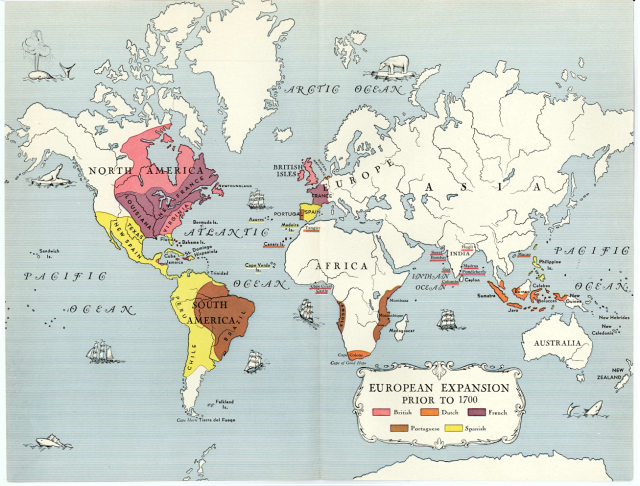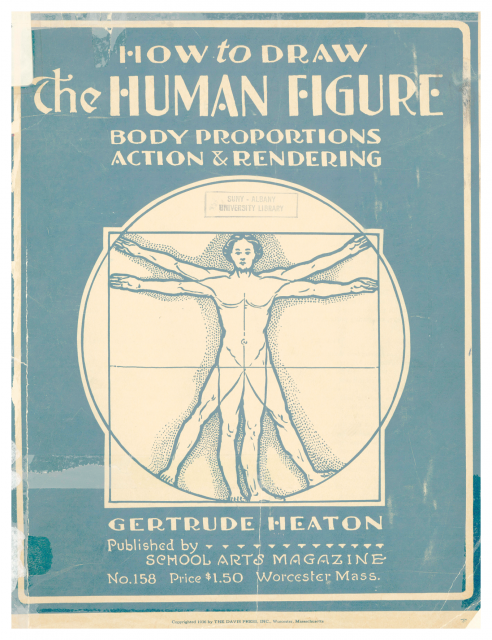What is Digital Preservation?
In 2009, the Preservation and Reformatting Section (PARS) of the Association for Library Collections and Technical Services (ALCTS) for the American Library Association (ALA) developed and drafted a definition of digital preservation for use on the web, verbally, in written policy statements, and other documents. They developed three definitions; a short definition, a medium definition, and a long definition. The short definition is “Digital preservation combines policies, strategies and actions that ensure access to digital content over time.” Remember, digitization is not digital preservation. In July 2015 a Digital Preservation Policy was approved by the University Library to guide efforts.

This map was digitized from “The Economic History of Europe” by Shepard Bancroft Clough and Charles Woolsey Cole, published in 1946. This book is still under copyright.
In Page Nav: Preservation Department
What is the difference between digital preservation and digitization?
Digitization is the act of scanning non-digital, analog materials, to digital format. Digital preservation is the act of managing and continually strategizing to keep digital information accessible and authentic. Digital preservation concepts apply to born digital information and digitized objects. If digital information is managed correctly, continual access is possible. When preserving digital information it is best to adhere to strategies such as those created by Digital Preservation and Outreach (DPOE) to help ensure continual access. DPOE has created a curriculum to help people understand six basic topics when it comes to managing digital information. These include identifying digital information and selecting what portion will be preserved; storing and protecting digital information for long term use and protection from threats; and managing and providing digital information for continual access over time.
What are the risks to digital information?
It seems as if, every day, new software, hardware, digital storage devices, or data formats are being created. Technology is changing at such a rapid pace that there is a constant threat of losing access to digital information, because digital information is at risk without some form of digital preservation. Risks to digital information include loss of data, inability to access, and complete loss.
How do you preserve digital information?
There are many different ways to preserve digital information, including text, photos, audio, and video. Some strategies to preserve digital information include:
Refreshing: transferring data to the same format. An example would be the transfer of music from an old CD-ROM to a new CD-ROM.
Migration: the conversion of data into a new format. An example is migrating a .doc file into a .pdf file.
Replication: having multiple copies of the same digital information across multiple systems. An example is having the same file on two different hard drives.
Emulation: creating the original operating environment for continual access. An example would include being able to run Windows Office 2003 on a computer running Windows 7.
Encapsulation: very similar to emulation but goes further in that the goal is to keep data and the operating system bundled together so that there is never a problem with deciphering the information.
Each strategy has both positives and negatives. The two strategies that ALA prescribes are migration and emulation. ALA recommends these two strategies because they seem to be the most beneficial for long-term use. The OAIS (Open Archival Information System) Reference Model states that the recommended strategy is migration.
What are we doing at the University Libraries to preserve digital information?
Most digital reformatting in the University Libraries is undertaken by the M.E. Grenander Department of Special Collections and Archives to preserve and provide access to a variety of information resources, including text, audio, and video. One of the bigger projects has been to digitize and reformat photographs from the University Archives Photograph Collections. Since 2001 they have captured over 14,000 photographs. Other collections that have been captured include holdings from the University Archives, the Civil Service Employees Association (CSEA) Collection, and the Marcia Brown Collection. They are available through LUNA, the University’s Digital Asset Management System.
The Preservation Department has been reformatting brittle books to digital form since 2003. These are made accessible through the University Libraries online catalog system, and are listed separately on our Brittle Books Project page.
The University Libraries follows the most current guidelines and standards for managing its digital assets. In 2014 the Libraries launched Scholars Archive, an institutional repository of articles, data and other scholarly works generated on campus. One of the primary goals of this initiative is to ensure preservation of our digital assets.

"How to Draw the Human Figure Body Proportions Action & Rendering" by Gertrude Heaton was published in 1936. This book is no longer under copyright due to its age. This is one of several hundred books digitized by the Preservation Department.
Further Resources
Digital Preservation for the Library of Congress under Digital Collections and Services:
The Digital Collections and Services page under the Digital Preservation website provides information about the National Digital Information Infrastructure and Preservation Program, Web Capture and Archiving, and Preservation Digital Reformatting Program.
Digital Preservation for the Library of Congress:
The Digital Preservation website (Library of Congress) offers information about the National Digital Stewardship Alliance, Digital Preservation Outreach and Education, The National Digital Stewardship Residency, and the National Digital Information Infrastructure and Preservation Program(NDIIPP).
National Digital Information Infrastructure and Preservation Program (NDIIPP) Partner Publications:
NDIIPP page provides the publication history from NDIIPP from 2002 to the present. Recent titles include: “Analysis of Current Digital Preservation Policies,” and “Perspectives on Personal Digital Archiving.”
The PARS website offers information about preservation and reformatting of library materials in all types of institutions and applying new technologies to assure continued access to library collections.
Digital Preservation Europe (DPE):
DPE gives information about digital preservation across academic research, cultural, public administration and industry sectors in Europe.
DPE What is digital preservation?:
The “what is digital preservation” section of DPE provides information about what is digital preservation, what is long term digital preservation, and what we need to preserve.
Digital Preservation Outreach & Education:
Digital Preservation Outreach and Education section of the Digital Preservation website provides information about outreach and education by a network of instructors and partners who help train individuals and organizations about digital preservation.
Preservation Tips for Family Collections
The Personal Archiving website offers advice on how to preserve digital materials, and how to archive personal collections. Digital photographs, digital audio, digital video, electronic mail, and personal digital records are covered in this website.